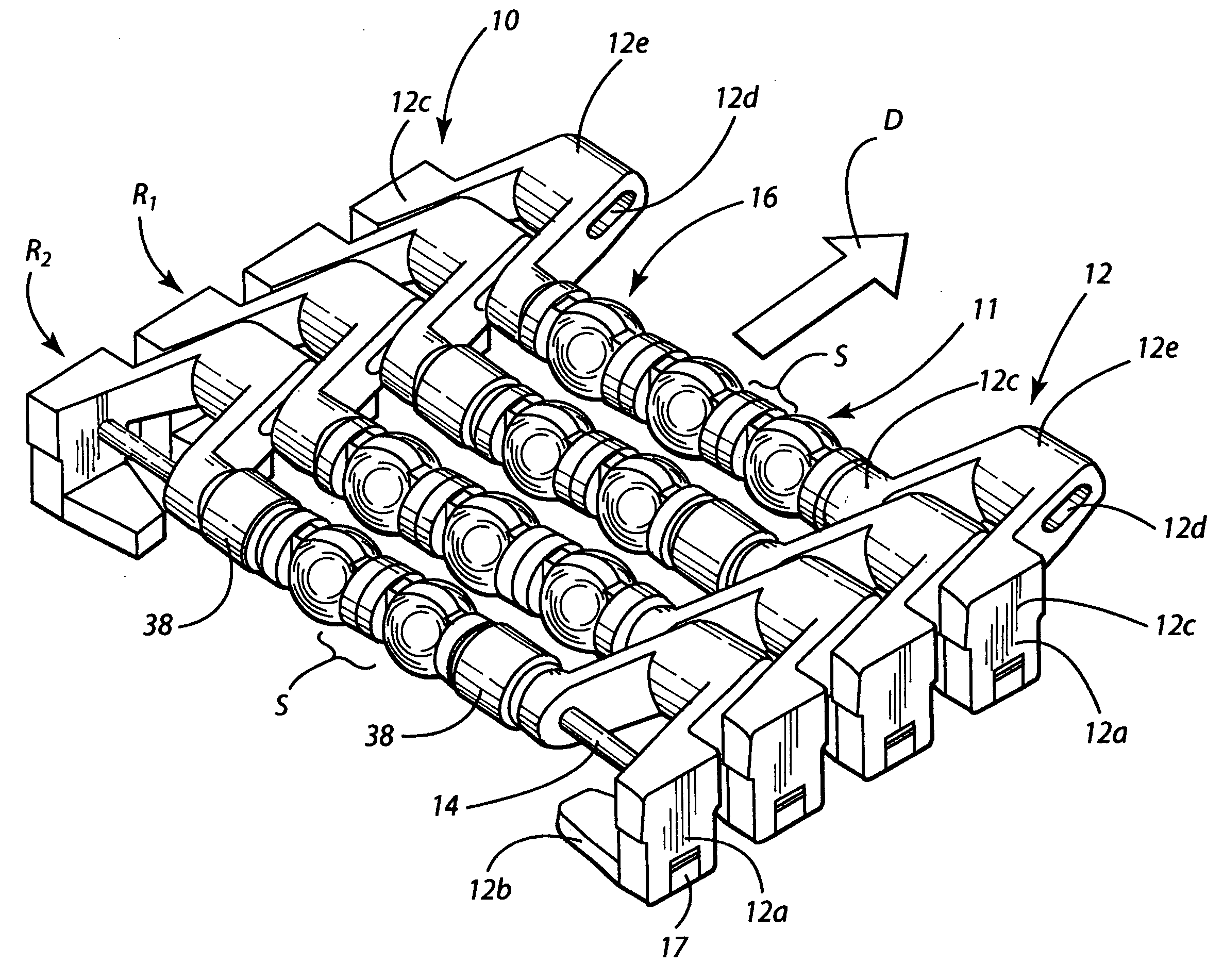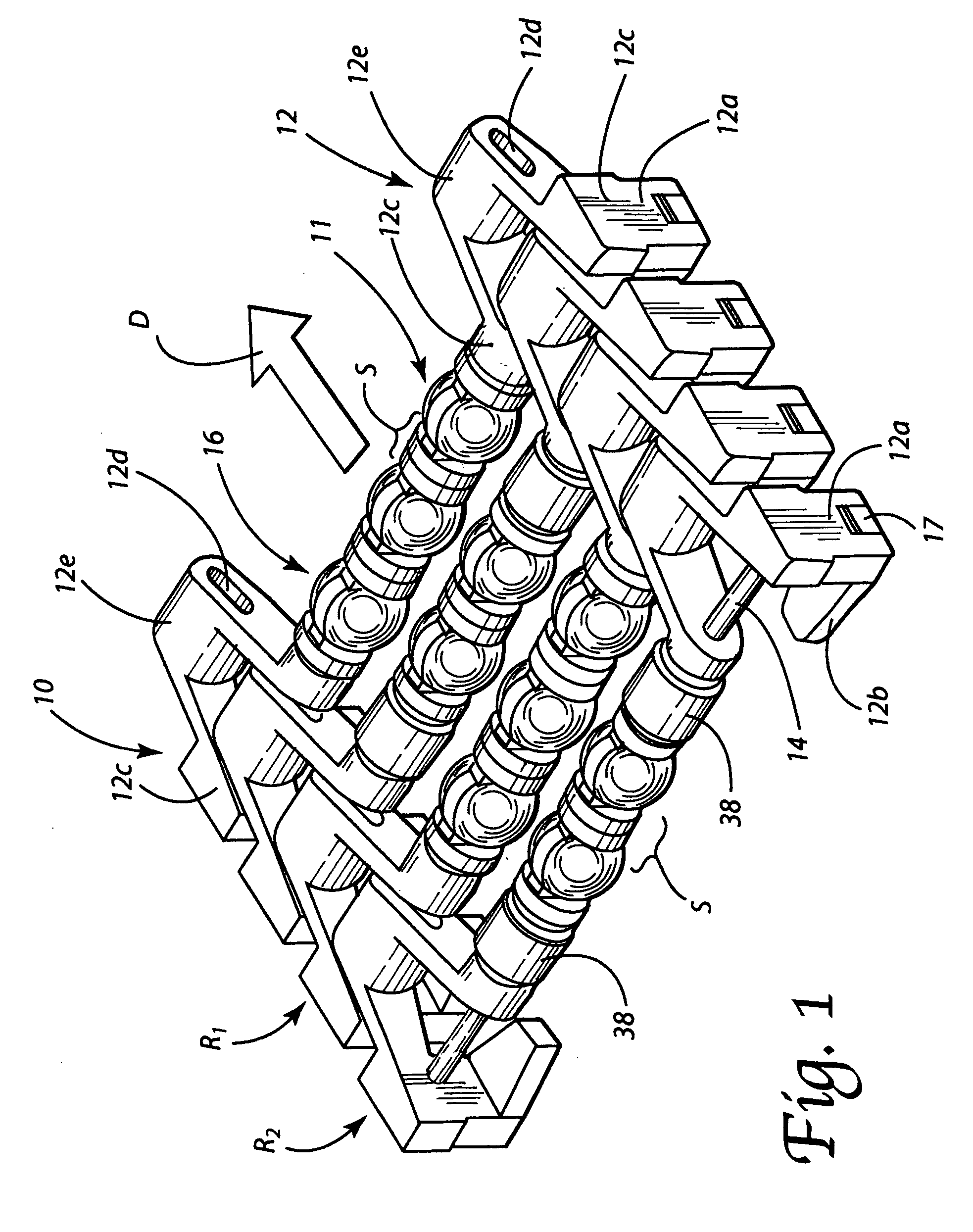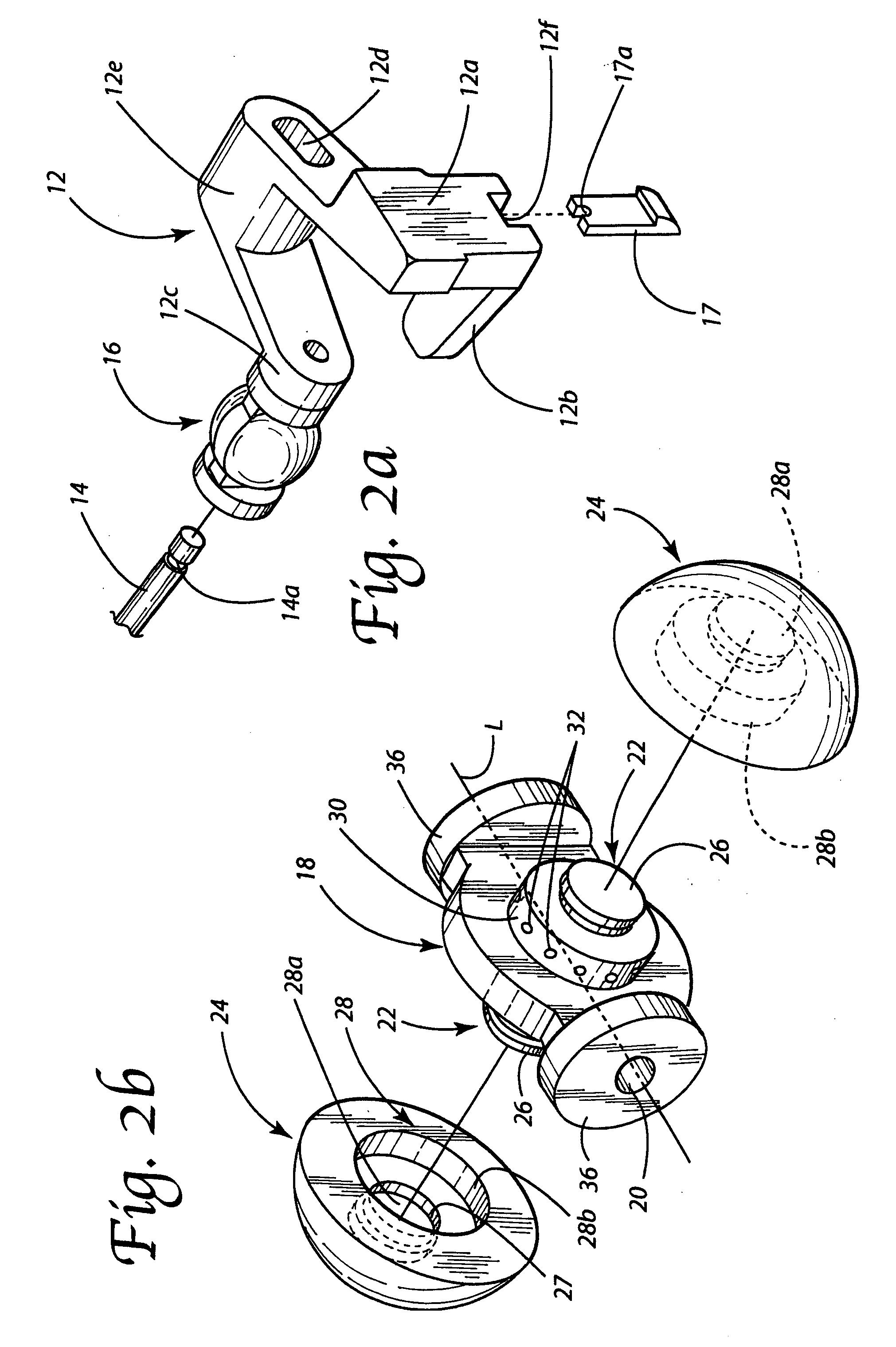Modular link conveyor chain with rotatable article engaging assemblies
- Summary
- Abstract
- Description
- Claims
- Application Information
AI Technical Summary
Benefits of technology
Problems solved by technology
Method used
Image
Examples
Embodiment Construction
[0035] Reference is now made to FIG. 1, which depicts an overall arrangement of a conveyor chain 10 constructed in accordance with one embodiment of the present invention and defining a conveying surface 11 for engaging and supporting articles. In this particular embodiment, the chain 10 comprises or includes modular links in the form of side links 12 arranged in spaced apart rows, which thus partially create the conveying surface 11. The rows are interconnected by transverse connectors 14 carrying one or more article engaging assemblies 16. The construction and function of these assemblies 16 is outlined further in the following description.
[0036] With regard to the side links 12, and as perhaps best understood with reference to FIG. 2a, each may be identical, or optionally may include an outer depending arm 12a and an inwardly projecting transverse tab 12b (thus creating different right handed or left handed side links, depending on the particular positioning). When present, the ...
PUM
 Login to View More
Login to View More Abstract
Description
Claims
Application Information
 Login to View More
Login to View More - R&D
- Intellectual Property
- Life Sciences
- Materials
- Tech Scout
- Unparalleled Data Quality
- Higher Quality Content
- 60% Fewer Hallucinations
Browse by: Latest US Patents, China's latest patents, Technical Efficacy Thesaurus, Application Domain, Technology Topic, Popular Technical Reports.
© 2025 PatSnap. All rights reserved.Legal|Privacy policy|Modern Slavery Act Transparency Statement|Sitemap|About US| Contact US: help@patsnap.com



